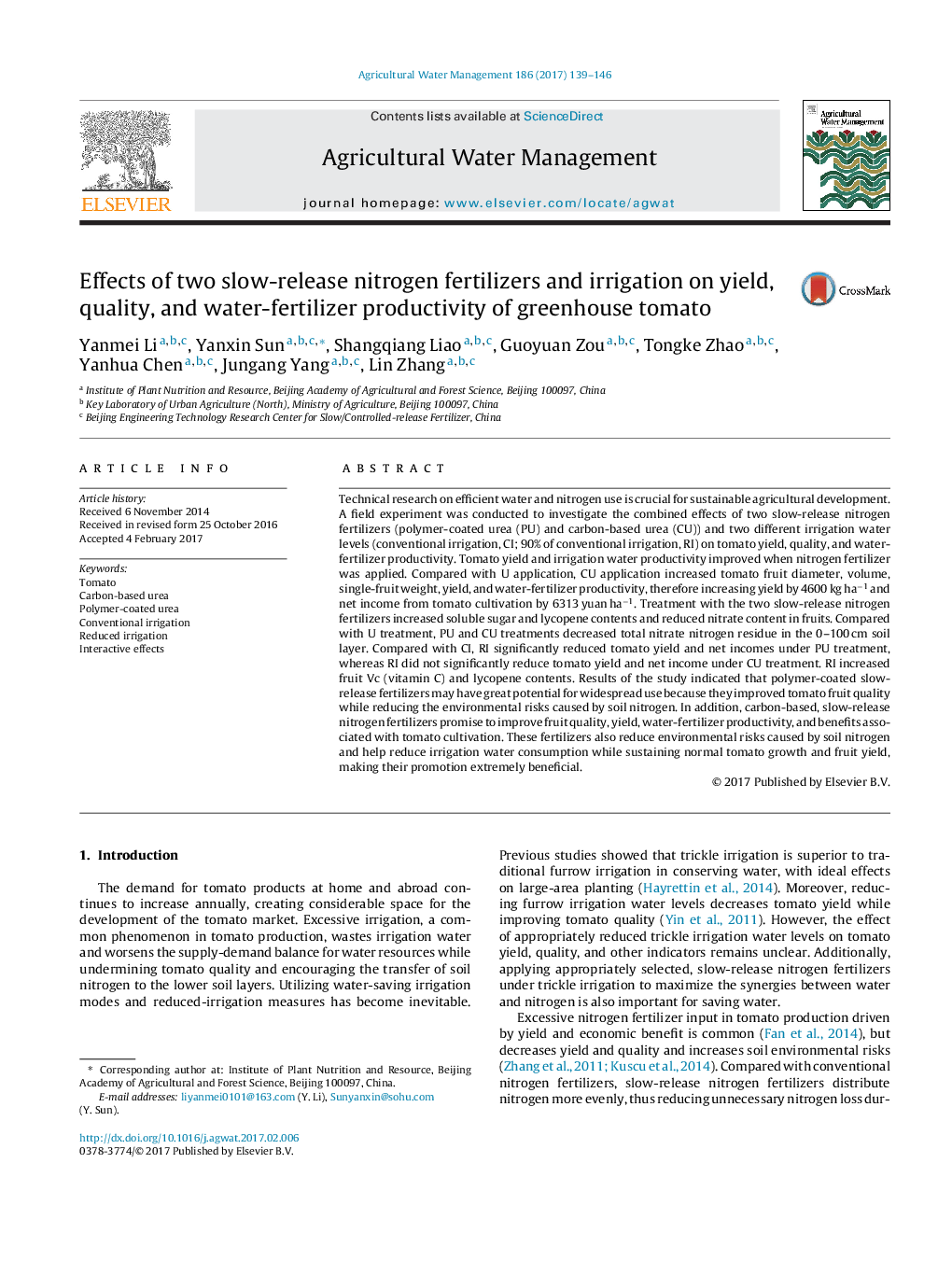| Article ID | Journal | Published Year | Pages | File Type |
|---|---|---|---|---|
| 5758543 | Agricultural Water Management | 2017 | 8 Pages |
Abstract
Technical research on efficient water and nitrogen use is crucial for sustainable agricultural development. A field experiment was conducted to investigate the combined effects of two slow-release nitrogen fertilizers (polymer-coated urea (PU) and carbon-based urea (CU)) and two different irrigation water levels (conventional irrigation, CI; 90% of conventional irrigation, RI) on tomato yield, quality, and water-fertilizer productivity. Tomato yield and irrigation water productivity improved when nitrogen fertilizer was applied. Compared with U application, CU application increased tomato fruit diameter, volume, single-fruit weight, yield, and water-fertilizer productivity, therefore increasing yield by 4600 kg haâ1 and net income from tomato cultivation by 6313 yuan haâ1. Treatment with the two slow-release nitrogen fertilizers increased soluble sugar and lycopene contents and reduced nitrate content in fruits. Compared with U treatment, PU and CU treatments decreased total nitrate nitrogen residue in the 0-100 cm soil layer. Compared with CI, RI significantly reduced tomato yield and net incomes under PU treatment, whereas RI did not significantly reduce tomato yield and net income under CU treatment. RI increased fruit Vc (vitamin C) and lycopene contents. Results of the study indicated that polymer-coated slow-release fertilizers may have great potential for widespread use because they improved tomato fruit quality while reducing the environmental risks caused by soil nitrogen. In addition, carbon-based, slow-release nitrogen fertilizers promise to improve fruit quality, yield, water-fertilizer productivity, and benefits associated with tomato cultivation. These fertilizers also reduce environmental risks caused by soil nitrogen and help reduce irrigation water consumption while sustaining normal tomato growth and fruit yield, making their promotion extremely beneficial.
Related Topics
Life Sciences
Agricultural and Biological Sciences
Agronomy and Crop Science
Authors
Yanmei Li, Yanxin Sun, Shangqiang Liao, Guoyuan Zou, Tongke Zhao, Yanhua Chen, Jungang Yang, Lin Zhang,
